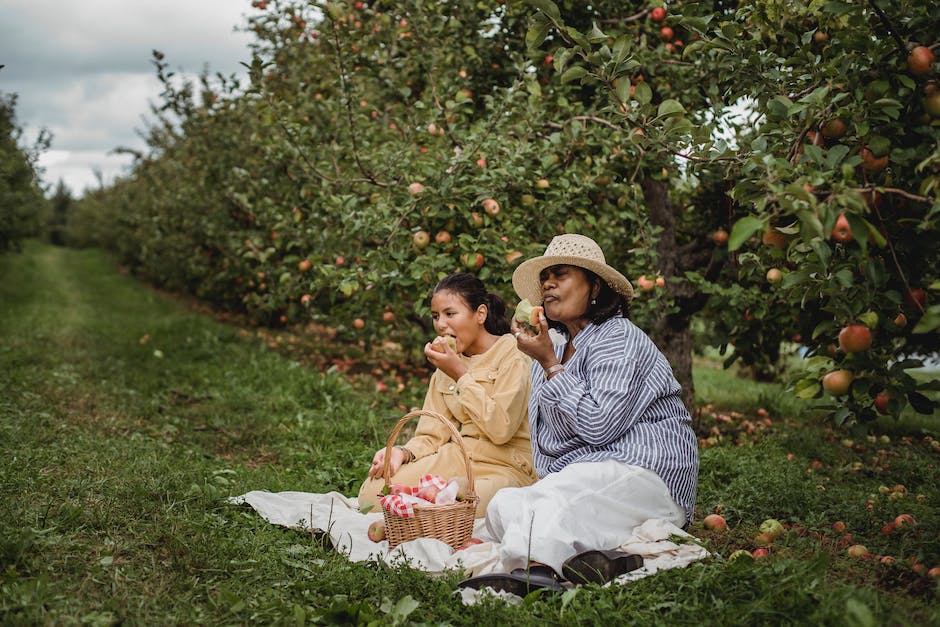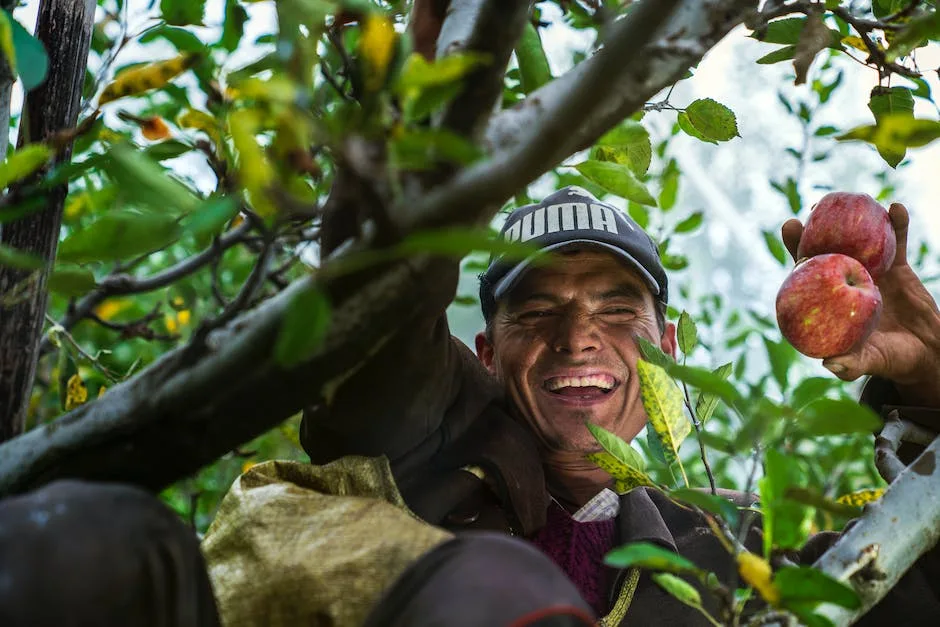Gymnosperm trees such as conifers generally have thinner, scale-like leaves, while angiosperm trees have thicker, more rigid leaves. The apple tree is an angiosperm, meaning it has flowers and produces fruit. The apple tree’s flowers are white with red or pink tinges, and they grow in clusters. Apple trees are deciduous, meaning they lose their leaves in the fall.
An apple tree is an angiosperm because it produces flowers.
Is Apple tree an angiosperm?
The apple tree is a flowering plant in the genus Malus. The apple tree is a deciduous tree, meaning it sheds its leaves annually. The apple tree grows to a height of 20–40 feet (6.1–12.2 m) and a spread of 15–30 feet (4.6–9.1 m). The apple tree flowers in the spring and the fruit ripens in the fall.
Apple trees are angiosperms, which are flowering plants. The flowers on an apple tree are typically white or pink, and the fruit is red, green, or yellow.
Is a tree angiosperm or gymnosperm
Conifers are gymnosperms and deciduous trees are angiosperms. The main difference between the two is that gymnosperms have naked seeds (exposed to the air) while angiosperms have seeds that are enclosed (usually in a fruit).
Gymnosperms are plants that have seeds but no flowers. The seeds of these plants are on cones or in cups. Most gymnosperms are evergreen. Gymnosperms include conifers, cycads and the ginkgo.
What is an apple tree classified as?
The Magnoliopsida class is made up of dicotyledons, and the Rosales order is within that class. The Rosaceae family is the rose family, and Malus P Mill is the genus for apples.
Deciduous trees are those that lose their leaves at the end of the growing season. They are also known as angiosperms, broadleaf trees, or hardwoods. Oaks, maples, and elms are all deciduous trees.
Coniferous trees are those that produce seeds without fruits or nuts. Most coniferous trees bear seeds in cones, have needles instead of broad leaves, and keep their needles in winter.
Which fruit is gymnosperm?
There are two main types of plants in the world: gymnosperms and angiosperms. Gymnosperms are plants that do not form fruit, while angiosperms are plants that do form fruit. There are several key differences between these two types of plants.
Gymnosperms have naked seeds, while angiosperms have enclosed seeds. This means that gymnosperm seeds are not protected by a fruit or other structure, while angiosperm seeds are. This can affect how the seeds are dispersed and how they are protected from predators.
Gymnosperms also tend to be less complex than angiosperms. They often have fewer flowers and simpler leaves. This complexity difference is likely due to the fact that angiosperms have to attract pollinators (like bees) to their flowers in order to reproduce, while gymnosperms do not.
Overall, there are several key differences between gymnosperms and angiosperms. Gymnosperms do not form fruit, they have naked seeds, and they are generally less complex than angiosperms. These differences can affect the dispersal and protection of the seeds as well as the overall structure of the plant.
Gymnosperms are a type of plant that bear naked seeds, meaning that the seeds are not enclosed within a fruit. Examples of gymnosperm plants include pine trees and spruce trees. Not all trees are gymnosperms, however. Some trees, like deciduous trees, are angiosperms, meaning that they produce seeds that are enclosed within a protective covering.
Is Pine Apple a gymnosperm
Pineapple is an edible fruit which is a tropical plant belonging to the family Bromeliaceae. It is an angiosperm and not a gymnosperm. The fruit is about the size of a human head and has a hard, scaly outer shell with a sweet, fleshy inside. Pineapple is a rich source of vitamin C and also contains small amounts of vitamins A, B, and E. It is a good source of dietary fiber and also contains minerals such as potassium, calcium, and phosphorus.
Gymnosperms are a type of seed plant that does not produce flowers or fruits. Instead, the seeds are produced on the surface of cones or other fleshy appendages. Angiosperms, on the other hand, are seed plants that produce flowers and fruits. The seeds are enclosed within the ovules of the flower, which then turns into a fruit.
What is an example of a gymnosperm plant?
Gymnosperms are agroup of plants that donot produce flowers. The eed in these plants are exposed and not enclosed in a fruit. Conifers are the largest group of living gymnosperms and are followed by cycds and gnetophytes. Ginkgo biloba is the only living species of ginkgo and is gymnosperm.
Angiosperms, monocots, and dicots are all types of plants. Gymnosperms are plants that do not produce flowers.
What are five examples of gymnosperms
Gymnosperms are plants that have naked seeds, as opposed to those producing seeds in moist, fleshy structures (angiosperms). They are an ancient group of plants, with fossil records dating back to the late Devonian period (around 375 million years ago). Many modern gymnosperms are evergreen trees.
Common examples of gymnosperms include cycads, pines, araucarias, thujas, cedars, spruces, firs, and junipers.
Taxonomists recognize four distinct divisions of extant (non-extinct) gymnospermous plants – Pinophyta, Cycadophyta, Ginkgophyta and Gnetophyta – with 88 genera and more than 1,000 species distributed throughout the world. These divisions are based on differences in the structure of the cones (fruit) and pollen, and in the number of chromosomes in the plants’ cells.
Are fruit trees gymnosperms?
Angiosperms are flowering plants that produce fruit. Fruit trees are a type of angiosperm, and examples of fruit trees include apples and oranges.
Eukaryotic cells are complex cells that contain organelles that are responsible for different functions. These organelles are separated from each other by membranes, which helps to keep the contents of each compartment isolated. This allows the cell to perform multiple functions more efficiently.
Is an apple tree asexual
Apple trees are generally pollinated by a large number of other apple seedlings, which leads to immense diversity. In the wild, this often leads to large amounts of pollen being exchanged between different apple trees, resulting in a high degree of genetic variability. This diversity is one of the things that makes apples such a popular fruit; with so many different types of apples to choose from, there is sure to be one that appeals to everyone.
Flowers are one of the most defining characteristics of angiosperms, and they play a vital role in the life cycle of these plants. Flowers are the reproductive structures of angiosperms, and they are typically composed of four parts: the Ovary, the Stamens, the Carpel, and the Petals. The ovary contains the ovules, which are responsible for producing the seeds. The stamens produce the pollen, which is necessary for fertilization. The carpels are the Pistil, and they are responsible for receiving the pollen during fertilization. The petals make up the flower’s aesthetic sense, and they are often brightly colored to attract pollinators.
Is a maple tree a gymnosperm
Most broadleaf trees are angiosperms, meaning they produce flowers and fruits, while most needle-leaf trees are gymnosperms, meaning they produce cones. There are some exceptions to this rule, but in general, angiosperms are broadleaf and gymnosperms are needle-leaf.
Angiosperms are a type of plant that produces flowers in order to reproduce. The flowers of an angiosperm contain the plant’s reproductive organs, including the ovules that will develop into seeds once fertilized. The pollen of an angiosperm must come into contact with the stigma, or female reproductive organ, in order for fertilization to occur. After fertilization, the ovules develop into seeds within the ovary, which is often a fleshy fruit that protects the seeds. Gymnosperms, on the other hand, are a type of plant that produces naked seeds, meaning that the seeds are not enclosed within an ovary. Instead, the seeds are found on the surface of scales or leaves. Pollination (thetransfer of pollen from the male reproductive organ to the female reproductive organ) can occur either by wind or by animals.
What is an example of angiosperm fruit
An Angiosperm is a flowering plant that produces fruits and grains. Some examples of Angiosperm are mango, apple, banana, peach, cherry, orange and pear. The pollination process is generally carried out by agents such as bees.
Fruits are an adaptation that helps angiosperms disperse their seeds. Some fruits, like those with mucilage or Feathery tails, are designed to be eaten by animals, who then spread the seeds in their droppings. Other fruits, such as those with hard shells or hooks, attach to the animals’ fur and are carried away until they eventually fall off and the seed is deposited elsewhere.
Is Strawberry a gymnosperm
Angiosperms are flowering plants that produce seeds covered with fruit. Strawberry is an angiosperm as it is a fruit. They belong to the family Rosaceae.
Conifers are by far the most abundant group of gymnosperms. They include pines, spruces, firs, hemlocks, cypresses, cedars, junipers, redwoods, and other relatives. Conifers are mostly found in cold, temperate, and boreal climates, but a few species also occur in subtropical and warm temperate regions.
Final Words
An apple tree (Malus domestica) is a deciduous tree in the rose family best known for its sweet, pomaceous fruit, the apple. It is cultivated worldwide as a fruit tree, and is the most widely grown species in the genus Malus. The apple tree originated in Central Asia, where its wild ancestor, Malus sieversii, is still found today.
After extensive research, it is safe to say that an apple tree is indeed an angiosperm. This is due to a number of factors, including the tree’s flowers, fruit, and seeds.
I’ve always been drawn to trees.
As a kid, I spent most of my free time outside, climbing, exploring, and trying to figure out the names of the trees around me.
That early curiosity eventually led me to study arboriculture and horticulture at Michigan State.
Later, I completed a degree in forestry at the University of Michigan.
I’ve been working in tree care and education ever since.
These days, I enjoy helping people learn more about the trees in their own backyards.
How they grow, how to care for them, and why they matter.
You don’t need to be an expert to appreciate trees.
A little curiosity goes a long way.
